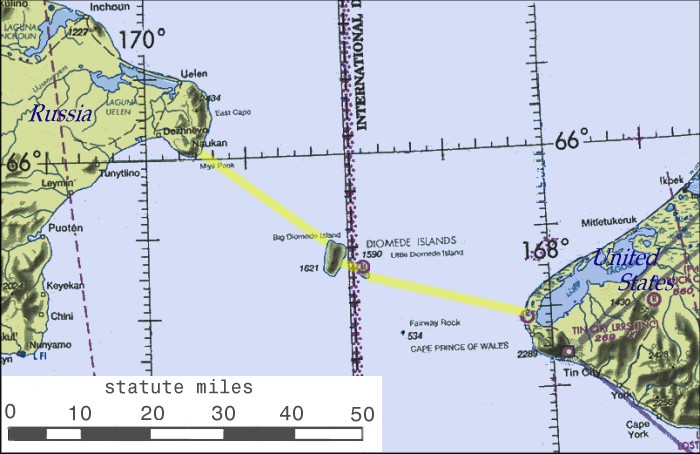Bering Strait Bridge

Discovery Channel's Extreme Engineering estimates the cost of a highway, double track rail and pipelines, at $105 billion, five times the cost of the Channel Tunnel. This excludes the cost of new roads and railways to reach the bridge. The Discovery Channel proposal contains several extremely long suspension spans. A lower estimate for a road bridge is $15–25 billion, based on the price (US$180m) per mile of the Confederation Bridge, the longest bridge in the world to span ice covered waters. The Confederation Bridge is a pure concrete bridge, spanning the Northumberland strait. The water is 10 to 25 meters in depth, roughly half the depth of the Bering Strait.
The cost for the connections would be high. Alone, a road to the Fairbanks area, about 700 miles (1,100 km), would cost at least $1.5 billion. The distances on the Russian side are larger than that. A railway would have to be much longer, and cost much more money. These costs might be justified inside each country, like linking Alaska with the rest of the USA, and linking western Alaska with the rest of Alaska. The bridge itself is even harder to finance.
The Bering Strait area is extremely remote and sparsely populated. Air is the main mode of travel in the area, and across the strait there are very few chartered flights by small private airlines such as Bering Air, located in Nome. There is no existing car or rail ferry service as there are no roads or railways for it to serve. So far, tourism in Chukotka is hindered by the international border controls and visa requirements. In Russia, a special visit permit is required because of military restrictions; this must be lifted for significant volumes of travel by air or boat to occur.
To finance the bridge or tunnel, income would be needed. Possible sources of such income include container traffic between Russia/China and Canada/U.S., which, due to a shorter (great circle) route and higher running speeds, could make the transit more quickly by rail via the Bering Strait than by sea crossing the Pacific Ocean, in addition to saving two land-water transfers for traffic originating and terminating at inland locations. A bridge or tunnel which also carried pipelines would earn pipeline revenues. Potential income from these sources is unknown. The main market for the oil would be the contiguous part of the USA, a very long distance away. The cost to ship the oil by sea is much lower than the enormous cost for a pipeline. Natural gas is a more likely candidate, due to the relative difficulty of transporting it by ship.
• Video Link



